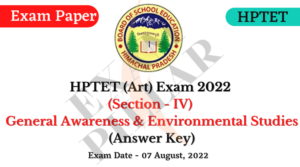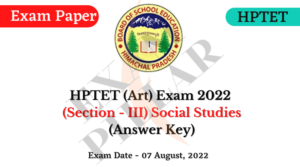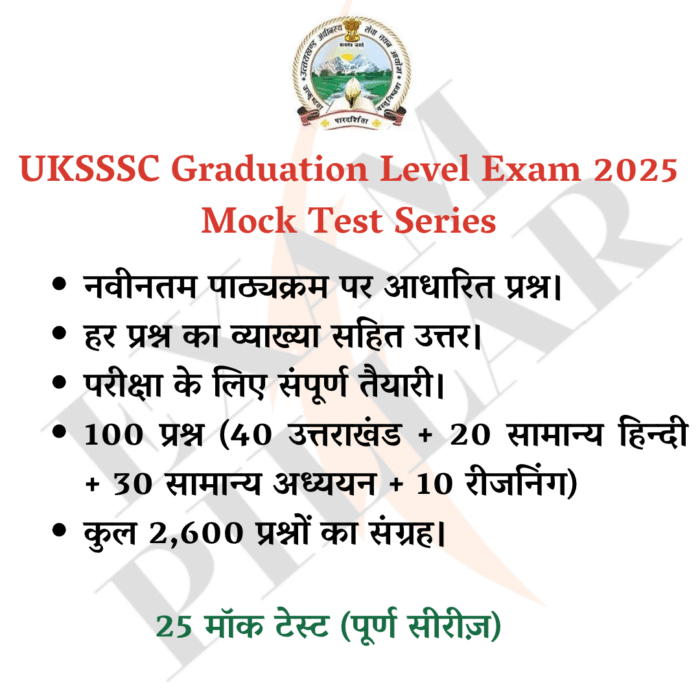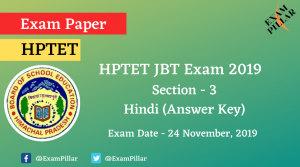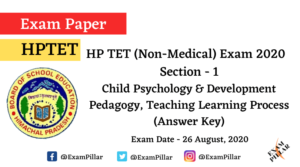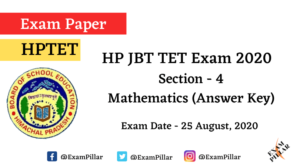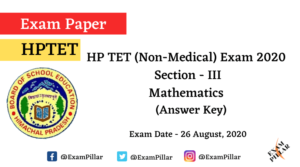Himachal Pradesh Board of School Education (HPBOSE), Dharmshala conducts Himachal Pradesh Teacher Eligibility Test (HPTET) Arts Exam 2020 on 12 December 2020. Here the HPTET Arts Exam 2020 Answer Key.
Exam :− HPTET (Himachal Pradesh Teacher Eligibility Test)
Organized by :−HPBOSE
Number of Question :− 150
Exam Date :– 12th December 2020
Click Here To Read This Paper in Hindi Language
Himachal Pradesh TET Arts Exam 2020 (Answer Key)
Section – I : Psychology
1. The oldest method in psychology is
(A) Introspection
(B) Observation
(C) Case Study
(D) Clinical method
Show Answer/Hide
2. The first book of psychology was written by
(A) Kohler
(B) William James
(C) Clark Hull
(D) Plato
Show Answer/Hide
3. The real carriers of heredity are
(A) Chromosomes
(B) Genes
(C) Nucleus of the cell
(D) X and Y chromosomes
Show Answer/Hide
4. Which of the following statement is not correct about development?
(A) Each phase of development has its own hazards.
(B) Development is not aided by stimulation
(C) Development is affected by cultural changes
(D) Each phase of development has characteristic behaviour.
Show Answer/Hide
5. The pace of development varies from one individual to another, but it follows ______ pattern.
(A) a toe to head
(B) a haphazard
(C) an unpredictable
(D) a sequential and orderly
Show Answer/Hide
6. “Psychology first lost its soul, then its mind, and then it lost its consciousness, it still has behaviour of a kind” was stated by
(A) Titchener
(B) Wundt
(C) Woodworth
(D) McDougall
Show Answer/Hide
7. Process of socialization includes
(A) Acquiring values and belief.
(B) Learning the customs and norms of a culture.
(C) Adaptation of social norms.
(D) All of these.
Show Answer/Hide
8. Piaget called the period of infancy as the
(A) Sensorimotor stage
(B) Pre operational stage
(C) Concrete operational stage
(D) Formal operational stage
Show Answer/Hide
9. According to Vygotsky, learning cannot be separated from
(A) reinforcement.
(B) a measurable change in behaviour.
(C) perception and attentional process.
(D) its social context.
Show Answer/Hide
10. Fitting new information into existing schemas is known as?
(A) Accommodation
(B) Equilibration
(C) Assimilation
(D) Organisation
Show Answer/Hide
11. Child centered education was advocated by which of the following thinkers?
(A) Erik Erikson
(B) Charles Darwin
(C) B. F. Skinner
(D) John Dewey
Show Answer/Hide
12. According to Gates, modification of behaviour through experience.
(A) Motivation
(B) Adjustment
(C) Learning
(D) Thinking
Show Answer/Hide
13. Which of the following theory of intelligence was given by Howard Gardner?
(A) One factor theory
(B) Two factor theory
(C) Group factor theory
(D) Multiple intelligence theory
Show Answer/Hide
14. The factor “g” in Spearman definition of intelligence stands for
(A) Genetic Intelligence
(B) Generative Intelligence
(C) General Intelligence
(D) Global Intelligence
Show Answer/Hide
15. A five year old child’s mental age is 6 years. Then his I.Q. will be
(A) 120
(B) 100
(C) 80
(D) 160
Show Answer/Hide
16. Both the chronological age and the mental age of a pupil is 7 years. He may be classified into which category?
(A) Below Normal Intelligence
(B) Normal Intelligence
(C) Above Normal Intelligence
(D) Genius
Show Answer/Hide
17. Which one of the following is a characteristic of a gifted learner ?
(A) He gets aggressive and frustrated
(B) He can feel under stimulated and bored if the class activities are not challenging enough.
(C) He is highly temperamental.
(D) He engages in ritualistic behaviour like hand flapping, rocking etc.
Show Answer/Hide
18. T.A.T. (Thematic Apperception Test) is a projective technique used for measuring
(A) Personality
(B) Intelligence
(C) Creativity
(D) Stress
Show Answer/Hide
19. A concept learnt by a student in science class is used by her in social science class. This is a type of
(A) Positive transfer of learning
(B) Negative transfer of learning.
(C) Zero transfer of learning.
(D) None of these
Show Answer/Hide
20. Individual differences are found in
(A) Intelligence
(B) Attitude
(C) Gender Difference
(D) All of the above
Show Answer/Hide


